School of Electronics and Information Engineering
Historical evolution
The School of Electronics and Information Engineering can be traced back to the Electronic Teaching and Research Section of the Atmospheric Exploration Department, which was established in 1972. After years of construction and development, in 2006, four related professional groups of the former Department of Information and Communication and the former Department of Electronic Engineering were established into the School of Electronics and Information Engineering.
In 2011, the “Sensor Network and Meteorological Equipment” represented by the College was selected as the first batch of advantageous disciplines in Jiangsu Province. In 2014, the “Information and Communication Engineering” discipline was selected into the second phase of Jiangsu Province's dominant discipline construction. In 2015, “Electronic Information Engineering” profession was selected into the first batch of brand professional construction in Jiangsu Province.
Major settings
The college now has four undergraduate majors in communication engineering, information engineering, electronic science and technology, and electronic information engineering. It has a doctoral degree in the first-level discipline of "Information and Communication Engineering", an academic master's degree in "Information and Communication Engineering" and a master's degree in "Electronics and Communication Engineering". The major of electronic information engineering is the specialty of Jiangsu Province, the specialization of national specialty construction, and the pilot program of the Ministry of Education's outstanding engineer training program; the communication engineering major as well as the electronic science and technology major are the specialties of China Meteorological Administration; the information engineering major is Jiangsu Province excellent engineer (software) training program pilot program. The electronic information major was approved as the Major Subjects Construction of the “Twelfth Five-Year Plan” of universities in Jiangsu Province.
Faculty
The college upholds people as foundation, and the construction of the teaching staff has always been in the strategic position of the college's priority development. After years of training and introduction, we have a strong faculty. There are 107 faculty members, including 87 full-time teachers, 13 professors (including 7 doctoral supervisors), 42 associate professors, 3 overseas non-full-time professors. Doctoral rate of full-time teachers is more than 90%. The rate reached 45%. There is 1 professor of National "Thousand People Plan” in the country and 2 professors of “high-level innovation and entrepreneurship talent introduction plan” in Jiangsu Province. And the college was selected as one of the “333 Cross-Century Academic Leaders Training Project” in Jiangsu Province. In 2015, “Radar Technology Team” was selected as “Innovation and Entrepreneurship talent introduction Team” in Jiangsu Province.
Scientific research
The college has rich scientific research and active academic communication. The “Information and Communication Engineering” is a discipline for the construction of advantageous disciplines in Jiangsu Province. The college has Jiangsu Provincial Key Laboratory of Meteorological Detection and Information Processing, Engineering Technology Center of Jiangsu Meteorological Sensor Network, Meteorological Detection Technology Research Center of China Meteorological Administration (Nanjing Branch), Radar Technology Research Institute, Electromagnetic Detection and Protection Research Center, etc. Research institutions. It has formed six research directions: radar technology, signal and information processing, electromagnetic detection and protection, communication theory and technology, meteorological instrumentation, sensor technology and application.
In the past five years, the college has hosted 104 national key R&D plans, industry special projects, 973, 863, National Natural Science Foundation key projects, 53 horizontal projects, and funds of 30.78 million yuan. The teachers have published 1,124 papers, including 341 SCI records, 9 high granted ESI articles. And 508 patents were granted, including 129 invention patents. The economic transformation of the results yielded more than 85 million yuan and 2 provincial and ministerial awards.
Teaching level
The training of each major of the college is accurate and the training objectives meet the needs of the society. Adhere to the characteristic education, the training program reflects the teaching of students according to their aptitude, and the training mode is flexible and diverse; it has a perfect scientific practice teaching system and an internship training base that meets the teaching needs; it pays attention to the improvement of students' practical skills. The students are closely linked to the needs of social and economic development, technological innovation of industrial enterprises, high comprehensive quality, strong innovation ability and strong service awareness, which are welcomed by society, industry and enterprises.
In 2012, the “Electronic Information Specialty” covering 4 undergraduate majors of the college was approved as the major construction specialty of the “Twelfth Five-Year Plan” of Jiangsu universities. In 2013, the college won the second prize of Jiangsu Province Teaching Progress. In 2015, “Electronic Information Engineering” was selected as the first batch of brand professional construction in Jiangsu Province.
Talent development
The college puts imparting knowledge and educating students in the first place firmly. The student-centered concept runs through the whole process of education and teaching. And the college pays attention to the cultivation of innovative ability, the morality and talent of the students. The rate of student entrance examination, going abroad and the high-quality employment have been steadily increasing year by year. The quality of student training has been widely praised by employers and has achieved outstanding results in various discipline competitions across the country. Party building work has been booming, and the proportion of student party members has reached record highs.
The college has nearly 1,500 undergraduates, more than 400 masters and doctoral students. It has established Jiangsu Electric and Electronic Experimental Teaching Center, Jiangsu Communication and Information Engineering Experimental Teaching Center, built more than 20 electronic information teaching practice laboratories open all day round, built large microwave darkroom, electromagnetic compatibility laboratory, microwave millimeter wave experiment Room, electromagnetic simulation laboratory, ultra-clean room laboratory, reliability laboratory, noise elimination laboratory, wind tunnel laboratory and other domestic first-class scientific research laboratory groups, of which 3 scientific research laboratories have been issued by the National Laboratory Qualification Committee CNAS qualification.
In order to improve students' engineering practice and the ability to serve the society, the college actively explores the construction of engineering joint bases. It is now jointly established with Jiangsu Beidou Satellite Navigation Research Institute and Nanjing Metrology Supervision and Inspection Institute with “Jiangsu Beidou Satellite Navigation Product Testing and Certification Center” and “General Inspection and Mapping Navigation Bureau Beidou Satellite Navigation
Product Testing Center”.
Degree Programs
Bachelor’s Degree(4 Years)
Communication engineering
Electronic information engineering
Electronic Science and Technology
Information engineering
Master’s Degree(3 Years)
Information and Communication Engineering
Electronics and Communication Engineering
Doctor’s Degree(3 Years)
Information and Communication Engineering
Faculty Members
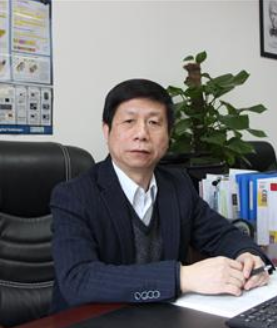
Ge Junxiang is the professor, the doctoral supervisor, as well as the president of the School of Electronic &Information engineering of NUIST. He is the director of the major laboratory of Meteorological Detection and Information Processing of Jiangsu Province, the director of the Technical Engineering Center of Jiangsu Meteorological Sensor Network, and the leader of the construction of the Advantages Discipline of Information and Communication Engineering and Communication Engineering of Jiangsu Province. He is the head of the professional construction of electronic information engineering brand in Jiangsu Province, the “Entrepreneurship and Innovation Team” of Jiangsu Province, the leader of the “Weather Radar Innovation Team” of Jiangsu Province and the training object of “Six Talent Peaks Project” in Jiangsu Province.
He has presided more than 30 national research projects, participated in major projects of the National Natural Science Foundation of China, major national model projects, Japanese 3G mobile communication international cooperation project, Japanese government optical millimeter wave high-speed communication research project, and Japanese enterprise research and development key projects, etc. He has published more than 80 papers on core academic journals of both domestic and overseas and owned more than 30 patents. He has been awarded the second prize of the Ministry of Education Science and Technology Progress Award and the third prize of Chinese Aviation Corporation's Science and Technology Progress Award. The Chinese Aviation Industry Corporation has awarded him the honorary title of “Outstanding Contribution to China Ph.D.”. He is also cross-century talents and leaders of youth disciplines in Beijing higher education institutions, high-level innovation and entrepreneurial talents in Jiangsu Province, and leaders of the “Weather Radar Innovation Team” in Jiangsu Province.
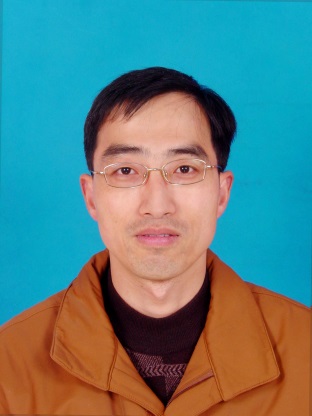
Sun Zaichun is the Party Secretary of the School of Electronics and Information Engineering, the Chairman of the College Labor Union, and the graduate student of the Economic Management Department of the Party School of the Central Committee of the Communist Party of China. He successively served as assistant director of the General Affairs Office, deputy director and director of the Security Department, assistant minister and minister of the People's Armed Forces, and director of the Infrastructure Department.

Xing Hongyan is the professor, the doctoral supervisor, the vice-president of School of Electronic &Information engineering of NUIST, the IEEE I&M Member, vice chairman of Chinese Meteorological, Hydrological and Marine Instruments Society, member of the Atmospheric Exploration and Instrumentation Committee of the Chinese Meteorological Society, Member of the National Meteorological Instrumentation and Observation Methods Standardization Technical Committee, assistant director of the Thunderbolt Protection Science and Technology Committee of the Jiangsu Meteorological Society as well as the director of the Jiangsu Military Industry Association. He has been elected as Key Members of the Outstanding Young Teacher of “Qing-lan Project” (experienced teachers guide the new teachers) of Jiangsu Province and the training object of “Six Talent Peaks Project” in Jiangsu Province.
In recent years, he has presided over more than 10 projects including the National 863 Program, the National Natural Science Foundation, the Ministry of Science and Technology Industry Sub-project, the national-level specialty construction, and the Jiangsu Science and Technology Support Program. He has published more than 70 academic papers in "Optical Engineering" and "Journal of Physics", among which SCI, EI, and ISTP have included 35 papers and applied for 12 patents. In 2011, he won the Science and Technology Achievement Award of China Instrument and Control Society.

Lu Zhenyu is the professor, the doctoral supervisor, as well as the vice-president of School of Electronic &Information engineering of NUIST. Hismain research field is artificial intelligence and random control. In recent years, he has published 12 papers by the first author, including 8 SCI papers, andowned 7 patents. Project, hosted two projects of the National Natural Science Foundation of China, as well as one project of the National Youth Natural Science Foundation of China, and hosted four related horizontal projects. He has been elected as Key Members of the Outstanding Young Teacher of “Qing-lan Project” (experienced teachers guide the new teachers) of Jiangsu Province Youth Academic committee of Chinese Association of Automation and the expert reviewer of the National Natural Science Foundation of China.

Cheng Yanli is the assistant secretary and vice-president of the Party Committee of the School of Electronics&Information Engineering, associate professor, national senior professional instructor, senior etiquette trainer, SYB trainer, and Jiangsu Province college student employment and entrepreneurship guidance expert. She has more than 20 years of experience in education management and party affairs for college students, and has won nearly 20 provincial and school-level honors.

Change Jianhua is the professor, the doctoral supervisor, as well as the vice-president of School of Electronic &Information engineering of NUIST. He is the committee member of the Professional Committee of Optoelectronic Technology of Chinese Optical Society, the advanced member of Chinese Institute of Electronics, the director of Jiangsu Institute of Electronics, the member of Jiangsu Society for Laser and Optical Engineering and the director of Nanjing Institute of Optical Communication and Optoelectronics Technology. He has been elected as Key Members of the Outstanding Young Teacher of “Qing-lan Project” (experienced teachers guide the new teachers) of Jiangsu Province, the training object of “Six Talent Peaks Project” in Jiangsu Province, and the leading technological entrepreneurial talent of Nanjing.
His main research field is photonics and optical devices, all-solid-state laser, lidar, photoelectric sensor, and etc. He has published more than 60 papers on core academic journals of both domestic and overseas, such as Opt. Lett., Opt. Express, Appl. Phys. B., and Acta Physica Sinica, owned more than 40 patents and authored one provincial key textbook. Besides, he has hosted over 10 research projects, such as the Surface of National Natural Science Foundation of China (NSFC), provincial key research and development plan, China’s Post-doctoral Fund, provincial natural science fund, and natural science fund of provincial colleges and universities. He is now a correspondence evaluation expert of NSFC and China Scholarship Council (CSC), as well as an evaluation expert of a wide range of provincial and ministerial projects, and scientific and technological awards. Also, he has always been invited to review papers for multiple core academic journals at home and abroad.

Wang Chao
1. Lecturer,Ph. D
Supervisor, Prof. Xu Lizhong
Ohio State University, visiting scholar
2. Research field:
High resolution remote sensing image processing
3. Major scientific research achievements:
Published 16 papers indexed by CSSCI or SCI or EI
Headed 8 projects supported by NSFC etc.

1. Zhao Chen
Lecturer,Ph. D, Nanyang Technological University
Supervisor, Prof. Sheel Aditya
Temasek Lab, NUS, Postdoc
2. Research field:
Metamaterials, Vacuum electron devices and antennas
3.Major scientific research achievements:
Published 9 paper indexed by SCI
Headed 1 project supported by NSFC
Headed 1 project supported by Natural Science Foundation of Jiangsu Province

1. Yong Zhou
Lecturer,Ph. D
Supervisor, Prof. Bangfeng Wang
Syrucuse University, visiting scholar
2. Research field:
Antenna Measurement Technology
3.Major scientific research achievements:
Published 6 papers indexed by SCI or EI
Headed 1 project supported by NSFC, 1 project supported by NSF of Jiangsu

1.Wang Lina
Lecturer, Ph. D
Supervisor, Prof. Wang Jiandong
Graduated from Nanjing University of Aeronautics and Astronautics
2. Research field:
Data mining and artificial intelligence
3.Major scientific research achievements:
Published 8 paper indexed by SCI or EI
Headed 1 software science project supported by China Meteorological Administration

1. Tao, Li
Associate Professor
Ph. D, Computer Science and Technology, Nanjing University of Aeronautics and Astronautics, P. R. China
2011-2012, China Meteorological Administration Meteorological Observation Center, visiting scholar;
2013-2014, China Meteorological Administration Meteorological Observation Center, visiting scholar;
2014-2015, Faculty of Information Technology, CRIS(Centre for Research in Intelligent Systems), KnowSysLab(Knowledge Systems Laboratory), Monash University, visiting scholar;
2017-2018, China Academic Degrees & Graduate Education Development Center, visiting scholar;
2. Research field:
Data Mining, Machine Learning, Intelligent Meteorological Data Analysis
3.Major scientific research achievements:
Published several paper;
Headed 2 projects supported by CMA.
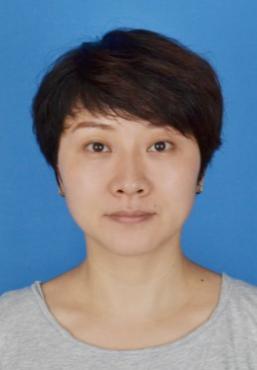
1. Yuan Zhou
Lecturer,Ph. D
Supervisor, Prof. Hongfu Zuo
University of East Anglia, visiting scholar
2. Research field:
generative adversarial networks, machine learning
3.Major scientific research achievements:
Published more than 10 papers indexed by CSSCI/SCI /EI
Headed 1 project supported by industry.
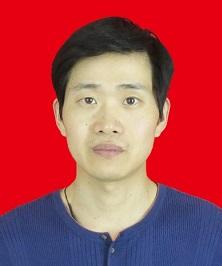
Qiukui Zhang
Lecturer, Ph.D
Supervisor, Prof. Limin Luo
Univeristé de Rnnes 1, post-doctor
Research field: Digital image process
Major scientific research achievements:
Published 2 paper indexed by EI

1. Qian Liu
Lecturer, Ph. D
Graduated from Nanjing University of Posts and Telecommunications
Supervisor, Prof. Xiao-yuan Jing
2. Research field:
Pattern recognition, machine learning
3. Major scientific research achievements:
Published 10 papers indexed by SCI
Published 23 papers indexed by EI
Authorized 10 invention patents
Participated in 3 projects supported by NSFC

1. Jiao Feng
Lecturer,Ph. D
Supervisor, Prof. Lajos Hanzo
University of Southampton, UK.
2. Research field: Wireless Communications, Communication Network, Digital Signal Processing, Machin Learning.
3.Major scientific research achievements:
Published 7 paper indexed by CSSCI or SCI or EI
Headed 1 project supported by NSFC

1. Jun He
Associate Professor,Ph. D, Southeast University.
Postdoc Associate, the Chinese University of Hong Kong
Research Fellow, IPAM, UCLA
2. Research field: Machine Learning, Computer Vision, Optimization.
3.Major scientific research achievements:
Published more than 20 papers indexed by SCI or EI
Headed 1 project supported by NSFC and 2 projects supported by industry. 
1. Jinglin, Du
Associate Professor
Ph. D, Computer Science and Technology, Nanjing University, P. R. China
2014-2015, China Meteorological Administration Meteorological National Satellite Meteorological Center, visiting scholar;
2016-2017, Faculty of Information Technology, CSISS(Centre for Spatial Information Science and Systems), George Mason University, visiting scholar;
2. Research field:
Wireless Sensor Networks, Intelligent Sensing, Intelligent Meteorological Data Analysis
3.Major scientific research achievements:
Published several paper;
Headed 1 projects supported by NSFC.
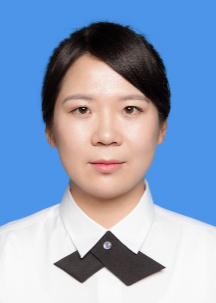
1.Sai-Nan Shi
Lecturer,Ph. D
2. Research field: Radar Signal Processing, Sea Clutter Mitigation, Target Detection
3. Major scientific research achievements:
Published 7 paper indexed by CSSCI or SCI or EI
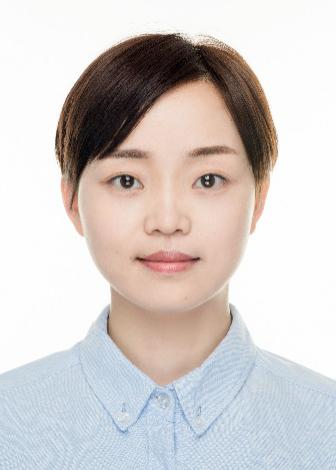
1. Ting Zhang
Lecturer,Ph. D
Supervisor, Prof. XiaojunLiu
Eindhoven University of Technology, visiting scholar
2. Research field:
Acoustic metamaterials
3.Major scientific research achievements:
Published 4 paper indexed by SCI
Headed 1 project supported by NSFC
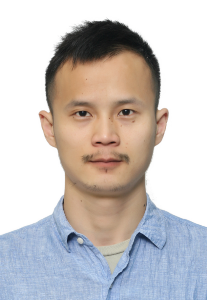
1. Jie Wang
Lecturer,Ph. D
Supervisor, Prof. Xingdong Liang
2. Research field:
Radar system designing and signal processing; joint communication and radar system.
3.Major scientific research achievements:
Published 16 paper indexed by CSSCI or SCI or EI
Headed 1 project supported by NSFC
Scientific Research
Radar Technology Institute
The Institute for Radar Techniques of NUIST was founded in March, 2017, originating from radar and satellite navigation research team which was founded in October, 2011. The institute now has 17 faculties, including 3 professors, 5 vice-professors, in which 15 of them have doctorates. Besides, it has more than 60 postdocs and doctoral students/postgraduates. Ge Junxiang is the director of the institute.

The members of the Institute for Radar Techniques
Jiangsu collaborative innovation center “Meteorological radar research team” was founded by the institute and the 14th research institute of CLP science and industry group jointly in 2013, and the “key laboratory of millimeter wave radar technology” was co-founded by the institute and the 38th research institute of CLP science and industry group in 2016. The institute became a technical supporting institution of Jiangsu Beidou satellite navigational testing and certification center and the Beidou navigational detection 2201 center of China PLA General Political Department in 2014. And in 2015, it was selected to join in Jiangsu Provincial “Entrepreneurship and Innovation Team” (college innovation level, with the fund of 3 million RMB).
The main research areas of the institute include radar system, Microwave millimeter wave and antenna technology, radar signal processing, the application of Beidou satellite navigation, and etc. Now in the institute, there are large-scaled microwave anechoic chamber, electromagnetic compatibility lab, microwave millimeter wave terahertz lab, electromagnetic simulation platform, signal processing lab, radar testing lab, Beidou navigation product testing lab, and etc.
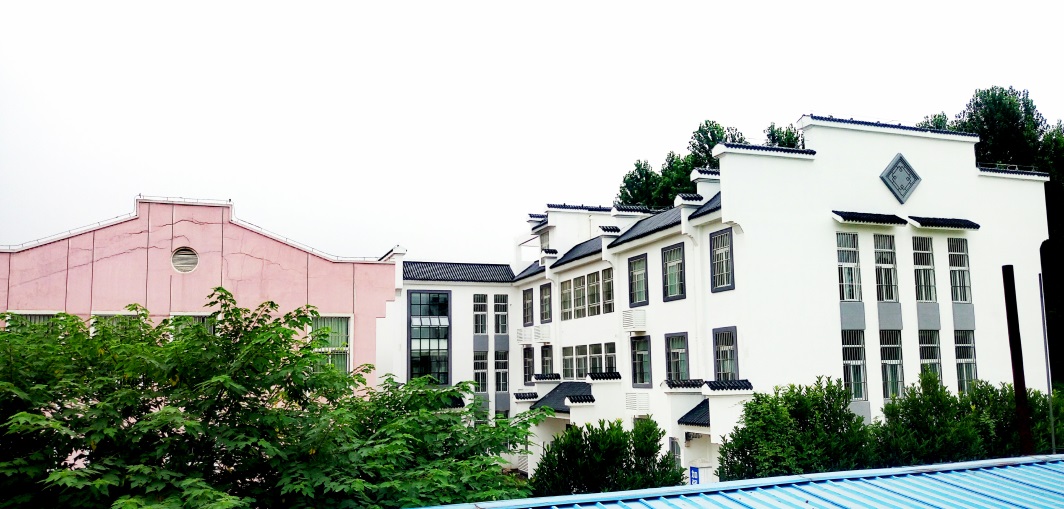
Weibo Building in which the institute is located

large-scaled microwave anechoic chamber 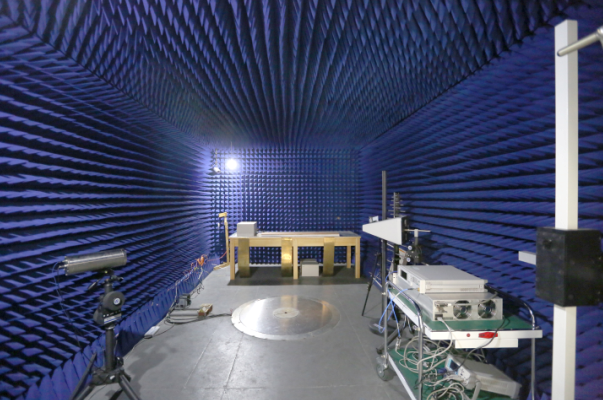
electromagnetic compatibility lab

microwave millimeter wave terahertz lab 
Beidou satellite navigation testing center
Since 2011, the institute has successively completed the public service (meteorology) special project “research on key technologies of millimeter wave cloud radar” (7.27 million RMB) of Ministry of Science and Technology, the cooperative sub-project “Terahertz model and simulation” with “863”, the key cooperative sub-project “Link analysis and power divider design of Fengyun No. 4 ground receiver” of Ministry of Science and Technology, national major cooperative sub-project “the development of the phased-array radar antenna of the second anti-collision of domestic large aircrafts, 2 projects of National Natural Science Foundation of China and over 20 scientific research projects at the national defense and provincial and ministerial levels.
The institute has developed the first domestic “94GHz ground-based millimeter-wave cloud radar system”, “X-band ship-navigation radar”, “183 GHz millimeter wave multipixel solid array spaceborne radiometer”, “220 GHz terahertz imaging radar system”, “Q&V dual-band millimeter wave LFMCW imaging radar system”, “universal radar signal processor”, “the high power synthesis system of 94GHz millimeter wave traveling wave tube pulse”, “the phased-array radar antenna of the second anti-collision of domestic large aircrafts”, “0.8-24GHz ultra-wideband high gain microwave antenna”, “W-band dual-polarized millimeter-wave high isolation antenna”, “Ka/W dual-band millimeter wave high isolation antenna”, “W-band millimeter-wave traveling wave tube high power synthesizer”, “330GHz millimeter wave radar transceiver unit” and etc.
More than 80 academic papers have been published, in which nearly 20 papers are indexed by SCI and over 30 papers can be retrieved by EI. More than 80 patents have been applied, and among them, over 40 have been authorized. The institute members also have won 1 first prize of Jiangsu Provincial Science and Technology Progress Award and 1 third prize of the Science and Technology Progress Award for National Defence.
Now the institute has 7 projects of National Natural Science Foundation of China under research, 2 projects of Jiangsu Provincial Natural Science Foundation, 1 special project from Jiangsu provincial innovation and innovation team, and 6 projects or collaborative ones of scientific research for National Defence, with the total scientific research fund of over 6 million RMB.

94GHz ground-based millimeter-wave cloud radar system
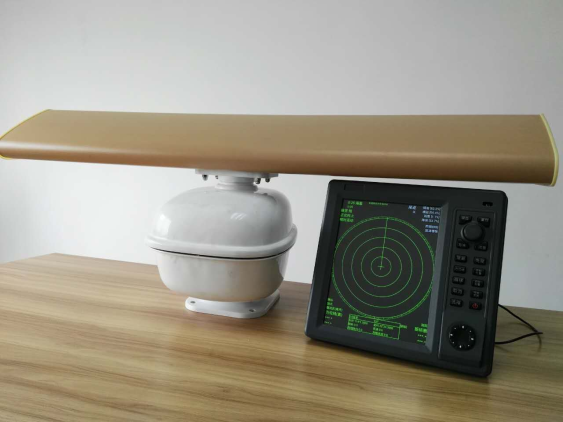
X-band ship-navigation radar system

183 GHz millimeter wave multipixel solid array spaceborne radiometer

Q&V dual-band millimeter wave LFMCW imaging radar system
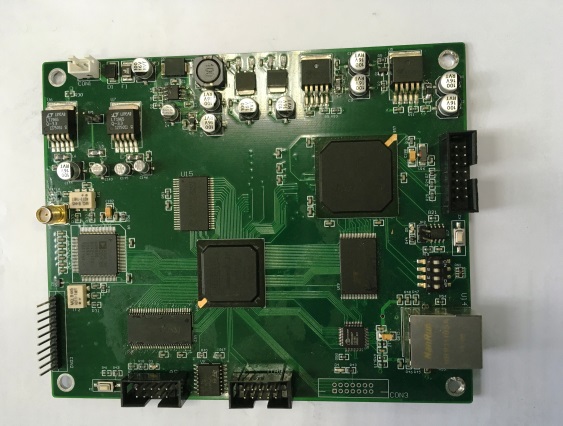
universal radar signal processor

the high power synthesis system of 94GHz millimeter wave traveling wave tube pulse

the phased-array radar antenna of the second anti-collision of domestic large aircrafts
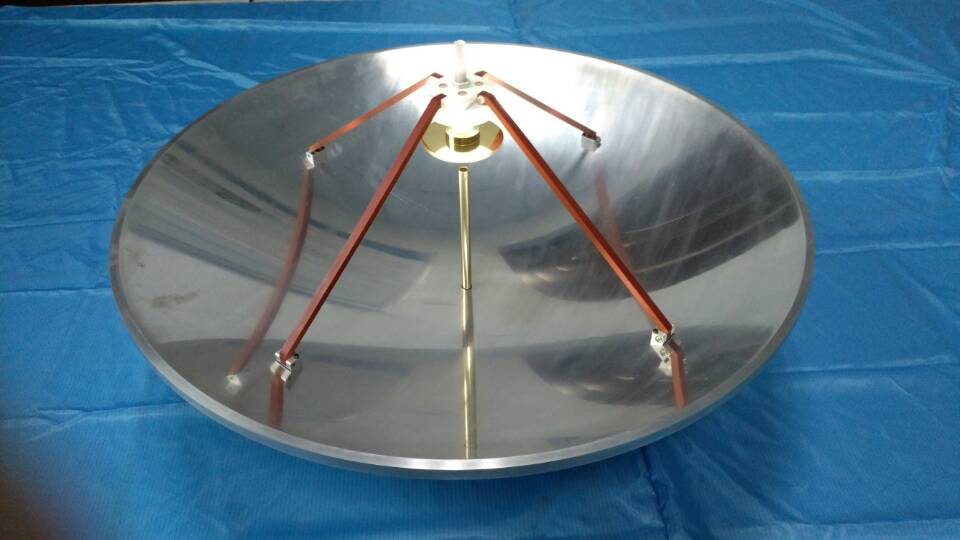
35GHz/94GHz coplanar high gain antenna
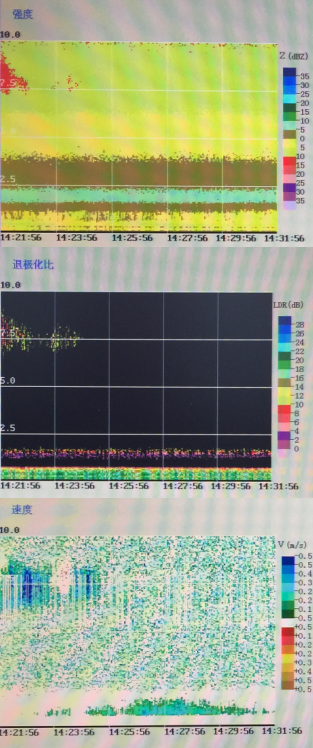
imaging test results of 94GHz millimeter-wave cloud radar

simulation results of penetrating wall radar imaging
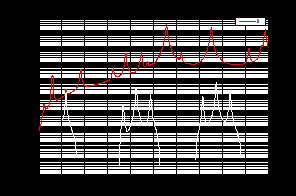
theoretical calculation results of 0-1000GHz electromagnetic wave atmospheric attenuation

simulation calculation results of cloud particle swarm electromagnetic scattering scintillation
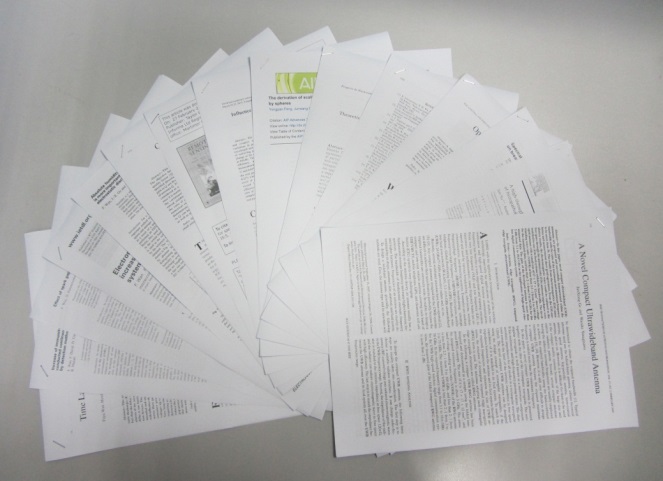
Academic papers

authorized domestic and foreign patents
Team of sensor technology and application
There are 16 teachers, including 2 professors and 4 associate professors, and more than 50 doctoral students and postgraduates in the team. The team leader, Dr. Liu Qingquan, graduated from the Berkeley Sensor and Actuator Center at the University of California, Berkeley, and received a Ph.D. in Electronic Engineering from the University of California, Davis. The research directions of the team include MEMS sensor and actuator technology research, meteorological sensor chip, meteorological sensor CFD design simulation, sensor measurement and control circuit, mid-infrared laser, fiber optic sensor, Internet of Things and other fields. He has undertaken 2 national industry special projects and 8 national natural science fund projects, and has undertaken a number of other provincial and ministerial-level projects and horizontal projects. Some high-precision sensors that have been working horizontally with enterprises have been initially industrialized.
Electromagnetic detection and protection team
There are 9 teachers (8 doctors), including 1 professor, 3 associate professors and 5 lecturers. Among them 4 teachers have ever studied abroad. The team members, under the leadership of Professor Geyi Wen , have strong scientific research ability and rich engineering experiences. They have published more than 200 theses in the domestic or foreign core journals, 2 monographs in English, and 2 monographs in Chinese. They have gained more than 60 patents and won several provincial and ministerial awards. Over 16 scientific research projects have been undertaken, such as the National Natural Science Foundation of China, the Natural Science Foundation of Jiangsu Province, the Horizontal Project of Enterprises, and the Open Fund of the National Millimeter Wave Key Laboratory.
Research directions: 1. Antenna engineering, mainly researching on the radiation mechanism of antennas, design, development and application of various antennas. Antenna is one of the bottlenecks in the design of modern wireless communication systems; 2. Microwave technology, mainly research on transmission lines, feeder networks, transmitter/receiver modules, passive and active circuits, and various microwave application systems (such as radar, microwave remote sensing and imaging, etc.); 3. Radio wave propagation, mainly to study the propagation model in various complex environments (such as indoor and outdoor), electromagnetic wave scattering, diffraction and interaction with the medium. Channel model prediction is another bottleneck in the design of modern wireless communication systems. Electromagnetic wave reflection, refraction, scattering, diffraction, absorption, multipath fading, Doppler effect, mutual interference, etc. bring many challenges to wireless communication engineering practice.
Communication and information processing team
With Professor Zhou as the academic leader, the team consists of 21 teachers, including 1 professor, 10 associate professors and 5 in-service doctoral students. The research directions cover: 1. Theoretical research on mobile communication and information technology. 2. Integration of meteorological information technology research and system development. 3. Research on key technologies for meteorological sensing and equipment. 4. Intelligent information processing mining and pattern recognition. They also undertake more than ten research projects such as the National Natural Science Foundation, the special project of the public welfare meteorological industry, and the Jiangsu Science and Technology Support Program. It involves the research and design of low-density parity check convolutional codes with code rate compatibility and code length control, based on participation perception. Multi-source meteorological data fusion and verification analysis methods, research on spectrum leasing strategies in collaborative cognitive radio networks, research on iterative signal detection and decoding algorithms for massive MIMO systems, Adhoc wireless sensor network channel models and their key technologies, wireless Sensor network channel modeling and impact on MAC/routing protocols, random vibration control theory of spaceborne TDICCD system and its key technologies. In 2016, it published 12 high-level academic papers (including SCI and EI), authorized 8 invention patents, 5 utility model patents, 11 invention patents and 3 utility model patents.
Signal Detection and Instrumentation Team
The signal detection and instrumentation team is led by Professor Xing Hongyan,which has 12 members, including 3 professors, 1 doctoral tutor, 6 associate professors and 3 lecturers. The team members include 2 “six peak talents” in Jiangsu Province, 2 young and middle-aged academic leaders of Jiangsu “Innovation Project”, 1 outstanding teacher and 3 “Top Ten” teachers of Nanjing University of Information Science and Technology (NUIST), as well as 4 excellent instructors of the National Undergraduate Electronic Design Competition. There are currently more than 60 doctoral and postgraduate students in the team.
The team’s research areas are mainly about: weak signal detection and processing, meteorological instrumentation, meteorological information processing, meteorological standards and metrology, image processing and ultrasonic imaging, pattern recognition, lightning detection and early warning technology, nonlinear circuits and systems, chaotic dynamics and secure communication, pattern recognition and big data mining, deep learning and sea clutter processing, and etc.
The team members has hosted more than 60 projects respectively, including the 863 Program, the National Natural Science Foundation of China, special projects of meteorological industry of ministry of science and technology and the Science and Technology Plan of Jiangsu Province, with the research funding of more than 12 million. They have published over 400 academic papers, including more than 150 articles SCI&EI indexed on authoritative journals, core journals and conferences at home and abroad, such as IEEE Trans. CE, Optical Eng., IEICE Trans. Com., IEEE SPL, Journal of Physics, Journal of Electronics, Journal of Instrumentation, Journal of Optics, and Journal of Electronics and Information. More than 200 patents have been granted, one industry-type product has been drafted, and two industry standards have been drafted and published. The automatic weather station signal simulator which is developed by the team has been well promoted and applied in the meteorological system. Moreover, the atmospheric electric field instruments and vector atmospheric electric field detection systems have already been applied in the meteorological industry.
The team’s research achievements include: the second prize of the 2015 Jiangsu Provincial Science and Technology, the second prize of the 2013 Jiangsu Provincial Teaching Achievements and the 2011 Science and Technology Achievement Award of China Instrument and Control Society. The undergraduates and postgraduates who have been coached by the team members have won 4 first prizes, 5 second prizes, and 2 third prizes of national awards, also more than 20 first prizes and 50 second prizes of East China or Jiangsu Province Division awards in National Undergraduate Electronics Design Contest.
Smart information-processing & communications system team
Professor Yecai Guo, the leader of the team, is recipient of 100 outstanding doctoral dissertations in China, the training target of the six talents in Jiangsu Province, and the famous teacher of Nanxin University. The team has 12 teachers, all of whom have doctoral degrees, including 3 professors, 6 associate professors and 3 lecturers. The team member's doctoral rate is 100%, and 5 teachers have experience in foreign study. The research direction of the team includes: 1 Intelligent information processing and communication system professional aspects: involving adaptive information processing, intelligent optimization and calculation, communication signal processing implementation and application; also involves wireless communication network, mobile communication, satellite communication, underwater acoustic communication, Network communication based on energy harvesting, etc. 2 Atmospheric Acoustics and Ocean Acoustics: The research involves the design of atmospheric environmental noise monitoring system, the acoustic propagation law under different hydrological conditions and sediment conditions, and the influence of seabed on acoustic wave propagation. The absorption, undulation, scattering and ocean noise of seawater on sound waves Research; research on ocean sound detection technology using sound waves; marine acoustic technology and instruments. 3 Image technology: The research field involves image imaging mechanism, biological image, medical image, satellite image processing technology, image sparse representation and compressed sensing, Bayesian machine learning and so on. There are complex channel fraction interval blind equalization theory based on wavelet transform, algorithm and implementation; key problem of robust online subspace identification and tracking; joint blind equalization theory and algorithm based on genetically optimized wavelet vector machine; based on fuzzy wavelet network Complex channel blind equalization theory and algorithm; integrated multi-element satellite communication key technology research. They have won 16 provincial and ministerial research projects and published more than 60 papers in international and domestic core journals. More than 100 invention patents, utility model patents and software copyrights have been granted.
Contact Us:
Office of the college
Xiaoling Huang
Tel: +025 58731196
Email:361003110@qq.com
Student Affairs
Yudi YE
Tel:+025 58731396
Email: 471809638@qq.com